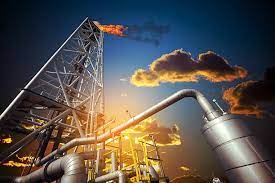In 2020, the per capita consumption of polymer in India was around 12 kilograms. This was way below the global average of 37 kilograms. With the progressive GDP trajectory, it is expected that the demand for petrochemical products will continue to grow significantly during the next twenty years.
Petrochemicals are a vital cog in the global industrial arena and a major growth driver for economies. India has also been riding the petrochemicals wave, with increased domestic consumption and rising demand globally. The accelerated demand has been against the backdrop of its rising acceptance among diverse industry sectors such as medicines, construction, agriculture, textiles, automotive, etc.
In 2020, the per capita consumption of polymer in India was around 12 kilograms. This was way below the global average of 37 kilograms. With the progressive GDP trajectory, it is expected that the demand for petrochemical products will continue to grow significantly during the next twenty years. A recent Kearney-India study said that India is emerging as a global hub for petrochemical activity, which can be attributed to the wide gap in domestic consumption of petrochemicals.
Government thrust to curate a petro-ecosystem
The government’s ongoing efforts to promote economic development in India are the main factor influencing the expansion of the petrochemical industry. The Department of Chemicals and Petrochemicals (DCPC) of the Government of India (GoI) has implemented several initiatives to improve the industry’s overall competitiveness, quality, and output. Initiatives such as Make in India, Aatmanirbhar Bharat Abhiyan, and the Production-Linked Incentive (PLI) Scheme are implemented to attract domestic manufacturing and facilitate exports.
Some of the notable measures for promoting the growth of the petrochemical industry are the mandatory standards set by the Bureau of Indian Standards (BIS), public procurement policies for chemicals and petrochemicals, schemes for setting up plastic parks, and adequate support for research and innovation by setting up centers of excellence. All these policy incentives, low cost of manufacturing capital goods and manpower, and overall demand scenario are boosting business confidence to plan larger petrochemical complexes in India. It is evident from recent project announcements by major public sector units, private sector refiners, and niche specialty chemical players.
Opportunities galore
While India emerges strong in the petrochemical sector, it is not an exaggeration to say that it is fertile to capitalize on new opportunities. Firstly, India’s energy demand is rising at an unprecedented pace. By 2030, India’s oil demand will significantly rise from its current consumption. Besides domestic opportunities, the global scenario substantiates international exposure further.
Over the years, China has been considered the major hub for petrochemicals. However, in recent times, the chemical industry in China is facing stricter environmental norms, approvals of which are necessary to source financing. This is slowly forcing the world to look at India as a potential market, especially in certain value chains and segments, providing India with the right platform for setting up these industries.
There is another, more urgent need to transform India into a petrochemical hub. Petrochemical intermediates are the primary feedstock for specialty chemicals and constitute a large portion of petrochemical imports. India is an attractive market for global companies, thanks to its per capita income, rapidly changing lifestyle, and rising demand from the end-use industries. With the rising domestic demand and the current import dependence, India potentially needs world-scale petrochemical assets by 2035.
Attracting investments
To promote investment in the chemical and petrochemicals sector, active steps are being taken in amending the PCPIR policy. The proposed new PCPIR policy will be implemented between 2020–35 and is expected to attract an approximate combined investment of over INR 34 lakh crores (USD 420 billion) for the sector. So, the refining industry is gearing up for expansions. The gross refinery margins can receive a steady impetus from value-added petrochemical derivatives, the demand for which is quite potent given the current factors. Investments in petrochemicals are also being planned as part of these refinery expansions.
The Sagarmala Programme that channels towards port modernization, development, and connectivity will help over 800 projects worth INR 5.48 lakh crores billion between 2015–2035 to reduce costs incurred for import and export trade. It will also encourage domestic trade with minimal investment in infrastructure development. The reduction in the corporate income tax rate for newly incorporated domestic manufacturing companies to 15% from 25% will make the return on investments made in India more attractive.
Here is what we should look at
India’s refinery and petrochemical hubs could construct industrial parks where focused innovation may be employed to create unique models for investors, replete with incentive programs. Making viable investment possibilities is the aim. Again, the growth of the sector also depends on the incubation of entrepreneurial initiatives, especially through talent development. Budding business owners in the sector have a wide selection of possibilities from both the plastic and textile clusters. Masterbatches, films, car parts, looms, packaging, and even spinning and weaving are a few of them. The sector could, in short, be leveraged for job creation, nation-building, and economic development.
How the sector is gearing up
In a time of uncertainties shaped by geopolitical setbacks, policy tightening measures, and disruption of global supply chains, delays in these planned petrochemical projects are already being handled effectively with promising growth from intrinsic sectors within India. Given the distinctive features of the Indian market, it is likely that the industry would see more win-win alliances between international and domestic businesses.
Domestic players can benefit from their global partners’ financial, technological, and operational know-how to expedite their growth strategies. Global firms can profit from their local partners’ comprehensive knowledge of the Indian market, their systems for sales and distribution, and their marketing prowess. Domestically, effective collaboration between private players and the government can strengthen the Indian chemical industry. How the industry maps its actions could shape the sector’s future and help India realize its dream of becoming a 5-trillion-dollar economy.
https://www.financialexpress.com/industry/petrochemicals-industry-to-act-as-catalyst-to-realize-indias-5-trillion-dollar-economy-vision/2774691/
https://pib.gov.in/PressReleaseIframePage.aspx?PRID=1863754





